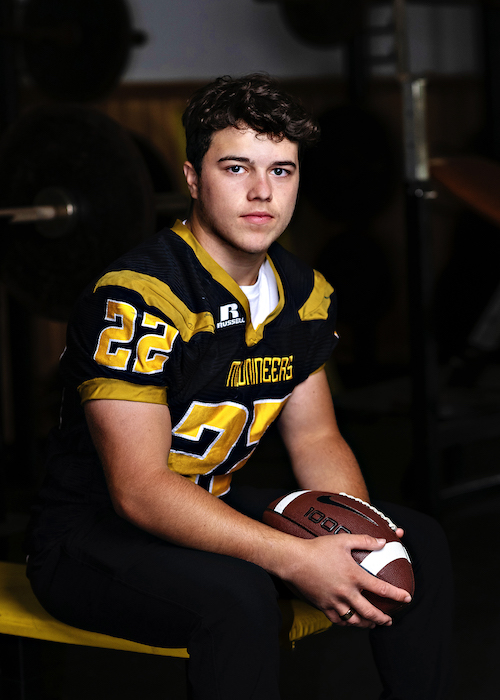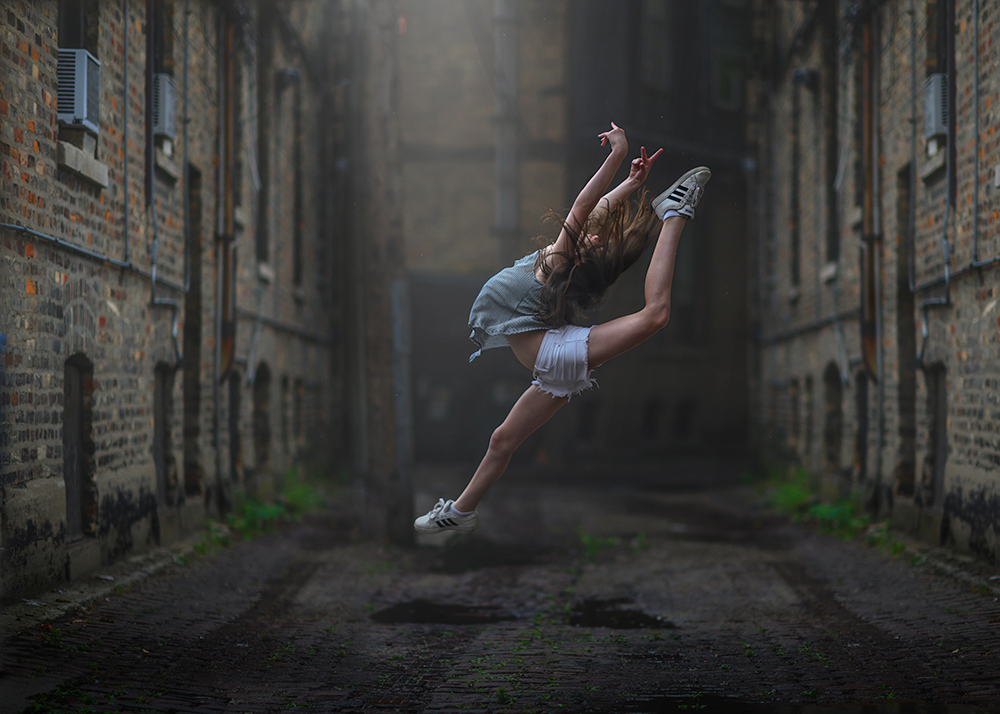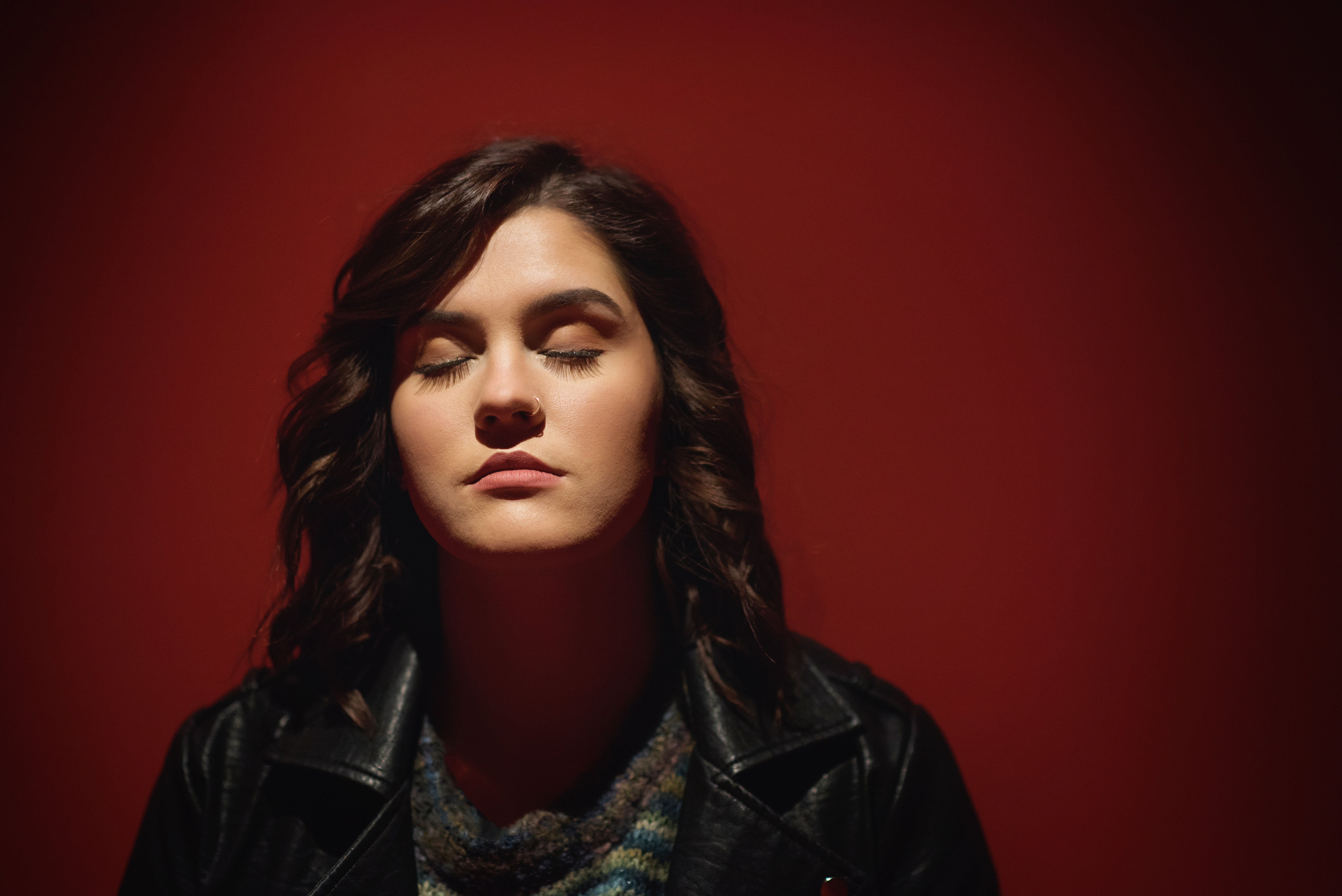High School Seniors + Sports
John Hishin of Drumbeat Photography may have spent nearly half his life taking photos while on the job as a safari guide, but living in the “sports-mad” nation of South Africa, the self-described fanatic couldn’t help but expand his creative endeavors to encompass school sports, too. In fact, with the current economic state, Hishin, 58, found it necessary to diversify and says most photographers in South Africa have had to face that reality as well; aside from sports and wildlife, Hishin also shoots weddings, portraits and properties.
Hishin’s approach to photographing players tearing down the field or surging through the water doesn’t veer far from capturing the wild animals that prowl the safari. In both settings he needs to think on his feet and predict the subject’s next move. He has to let go of planning the shot and positioning the light. When the shot presents itself, he takes it quickly. And contrary to any assumption, he doesn’t claim shooting sports is less dangerous than shooting wildlife. “I have been wiped out by bicycles and canoes more often than I have been charged by rhinos,” he says.
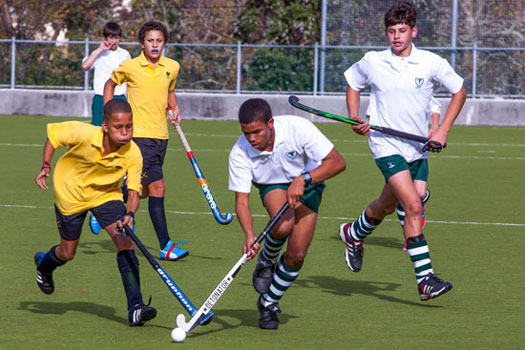 All Photos © John Hishin
All Photos © John Hishin

A Canon man, Hishin owned his first camera when he was 9 years old, had his own darkroom by age 11, and when he was 13 years old, sold his first image of a bicycle race. After years of practice, he went full-time in 2007 with Drumbeat Photography. Though school sports photography remains a fairly lucrative endeavor, a revision to South Africa’s Children’s Amendment Act of 2005 slowed the market slightly; photographers are no longer allowed to post photos of children online without consent from their parents or guardians, except when photographers are contracted by tournaments or organizations. When a large group of players are in any given photo, this poses a logistical inconvenience to photographers who want to promote their work quickly.
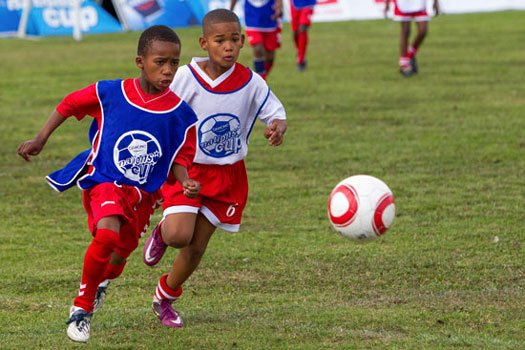
But Hishin makes up for this slight hiccup in his steadfast digital presence and by approaching each appointment differently and thinking outside the box. “I try not to follow the norms,” he says. “Many photographers will always shoot from the same place.” Behind the goal line, for example, is a classic “guaranteed shot.” Hishin always keeps an eye out for the alternative position, he says, to get right in the middle of the excitement. Though some may consider these to be occupational challenges of a sports photographer, getting in the middle of it might be Hishin’s favorite part; he loves trying to get that perfect shot while riding on a boat in the middle of the sea, or waiting for the right moment to open the shutter while straddling a canoe in a flooded river. “That’s the adrenaline junkie in me,” Hishin says. He hasn’t had any mishaps with these excursions yet, but he’s certainly encountered the unexpected, including Great White Shark and whale sightings next to his boat.
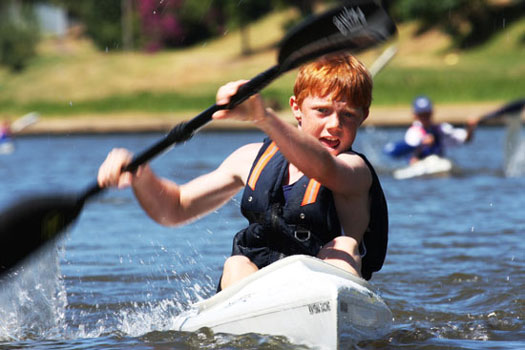
For him, sports photography is “real photography.” Nothing can really be planned. But your best bet, Hishin advises, is to become as familiar with the sport as possible. “Know the sport you’re shooting, understand the rules and research the teams,” he says. “These give me the chance to predict a play and get the shot.” Having a second photographer doesn’t hurt either; a second pair of eyes helps cover the game completely—Hishin rarely shoots without Kassie Crous, his “faithful second shooter” and business partner.
A Matter of Quick Thinking
Taking photos of races and marathon may sound easy—unlike other sports, you know exactly where the participants are going. The action is predictable, and it could be tempting to simply stick to one spot and capture it as it goes by. Photographers, however, are challenged to avoid monotony in their shots, which often means they must move along the track and scope out the best places to post up before the race begins. Those sweet spots may be miles apart—after all, races are not contained to soccer fields or hockey rinks.
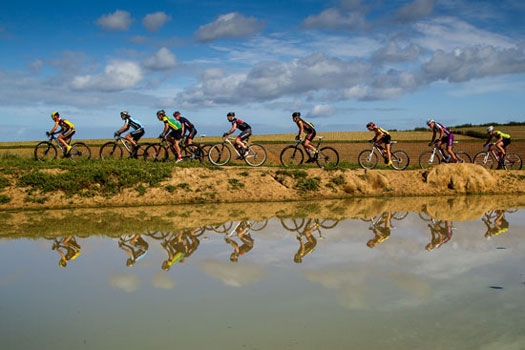
One of John Hishin’s favorite events to shoot is the three-day stage mountain biking race, “Ride the Rhino” (below) that travels through 250km of beautiful South African terrain along the southwestern coast. Hishin uses his Canon 1D Mark IV with a 24-105mm f/4 lens to capture the landscape at wide angles (below), and he also uses his Canon 5D Mark II with a 70-200mm f/2.8 lens to get the tighter action shots. “The challenge here is not only photographically,” Hishin says “but also the ability to keep ahead of the lead riders while also covering as much of the field and spirit of the event as possible.” And when the spirit of the event is moving 15 mph along bumpy, rocky, windy terrain, let’s just say you’ve got to be prepared.
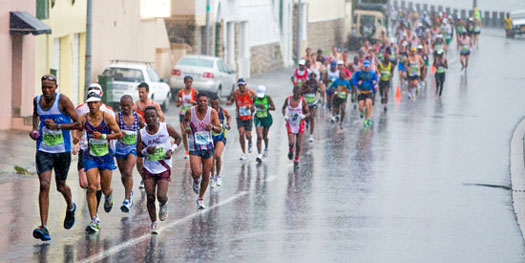
Having driven the route the week before, Hishin knew where he would settle down to get the best shots. But on the morning of the race, he realized his plan would not hold up to the “gale force winds and sheeting rain,” Hishin says. “Soon the roads would be impassable to get anywhere.” As a matter of quick thinking, he says, and he abandoned the spots he had meticulously planned out the week prior. Maneuvering his Land Rover to a point with a decent view that would be passable through the storm, Hishin climbed into the back of his car, snapped on his 400mm f/2.8 lens, opened his rear door and took this marathon shot (above).


